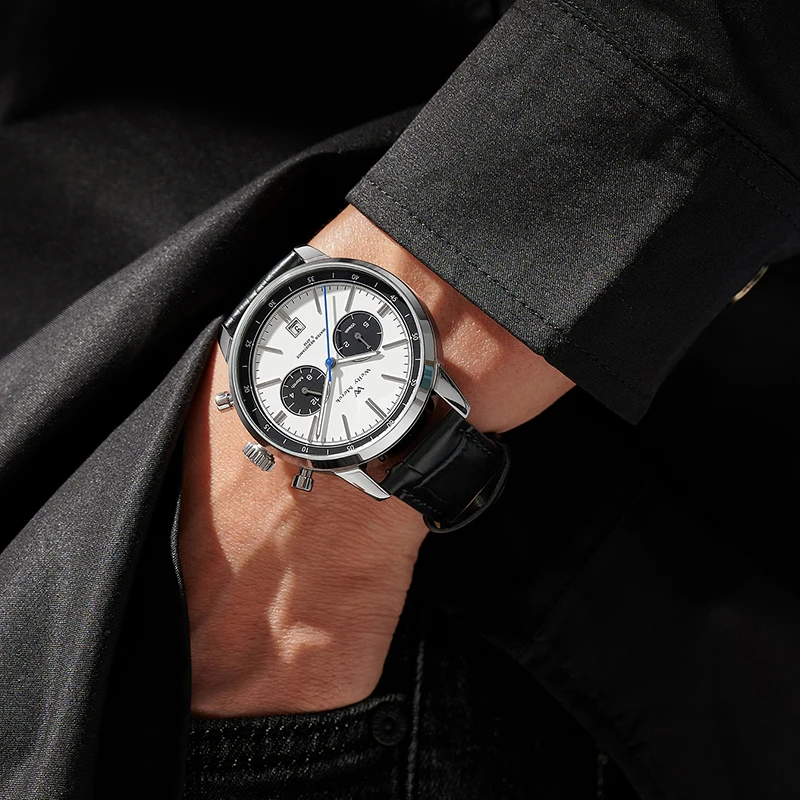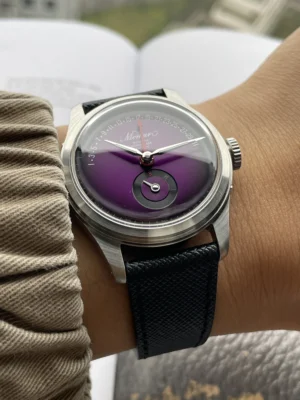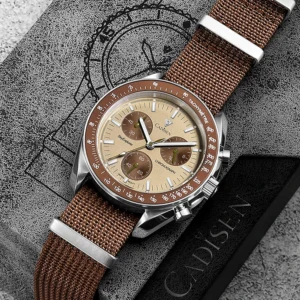What Makes GMT One of the Most Practical Watch Complications
In the world of mechanical watches, few complications offer as much everyday utility as the GMT function. GMT (Greenwich Mean Time) functionality in watches allows wearers to track multiple time zones simultaneously using an additional hand and specialized markers. While many watch complications exist primarily for their technical impressiveness or aesthetic appeal, the GMT stands out for its genuine practicality.
Tool watches are purpose-built timepieces designed to serve specific functional needs beyond merely telling time. They feature robust construction and specialized capabilities that make them valuable instruments for professionals and enthusiasts alike. When GMT functionality is incorporated into a tool watch, the result is a remarkably practical instrument for our globally connected world.
GMT Defined: A GMT watch features an additional hand that rotates once every 24 hours (rather than 12), allowing the wearer to track a second time zone using a 24-hour scale on the watch dial or bezel.
The GMT complication first developed as a navigation aid for pilots crossing multiple time zones, but its relevance has only grown in modern times. With international business relationships, remote global teams, and increased international travel becoming commonplace, the ability to track multiple time zones at a glance provides genuine value to many watch owners.
What makes GMT particularly practical is how it solves a real-world problem with an elegant mechanical solution. Unlike more complex complications that may rarely be used, GMT functionality often serves its owners multiple times daily. The evolution of history and dive watch engineering parallels the development of GMT watches, as both addressed specific professional needs.
Understanding the Core Functions of a GMT Watch
At its essence, a GMT watch provides the ability to track two time zones simultaneously. However, understanding exactly how this functionality works requires looking at several key elements:
The fundamental components of GMT functionality include:
- 24-hour hand: An additional hand that completes one full rotation every 24 hours (compared to the standard hour hand’s 12-hour rotation)
- 24-hour scale: A numbered scale, either on the dial or bezel, marked from 1-24 that corresponds with the GMT hand
- Local time display: The standard hour, minute and seconds hands that show your current local time
- Independent setting mechanisms: Methods to adjust the various hands separately
What truly defines a GMT watch is the ability to read both “home” and “away” time at a glance. This differs from other multi-timezone complications like world timers (which display multiple zones simultaneously) or dual-time watches (which may use two separate subdials).
The beauty of the GMT design lies in its intuitive readability. Once set properly, you simply read your local time normally with the standard hands, while the distinctively colored GMT hand points to your second time zone on the 24-hour scale. This 24-hour scale is crucial because it eliminates any ambiguity between AM and PM in the second time zone.
For travelers and international professionals, understanding GMT complications in dive watches and other tool watches provides significant advantages over digital alternatives. The ability to see both time zones continuously without pressing buttons or switching modes makes GMT watches remarkably convenient despite their mechanical nature.
The Anatomy of a GMT Tool Watch
To fully appreciate how GMT watches function, let’s break down their key components and how they work together as an integrated system.
The 24-Hour Hand
The defining feature of any GMT watch is its additional 24-hour hand. This hand is typically:
– Distinctively styled with a contrasting color (often red or orange)
– Shaped differently than other hands (frequently arrow-tipped)
– Shorter than the main hour hand to align with the 24-hour scale
– Designed to complete one full rotation every 24 hours
This specialized hand serves as the primary reference for your second time zone. Its high visibility ensures you can instantly differentiate between local time and reference time.
The 24-Hour Scale
The 24-hour scale provides the reference points for the GMT hand and can appear in two locations:
– On the dial itself, typically as an inner ring of numerals
– On the watch bezel (either fixed or rotating)
This scale uses a 24-hour format (1-24 or 0-24) rather than the traditional 12-hour format, eliminating confusion between AM and PM. Many GMT watches use color coding on this scale to visually distinguish daytime hours (typically 6:00-18:00) from nighttime hours.
The Rotating Bezel
Many GMT tool watches feature a rotating bezel marked with 24-hour indicators. This component serves multiple purposes:
– Allows tracking of a third time zone when rotated
– Provides visual reference points for the GMT hand
– Often features bi-directional rotation for easy adjustment
The bezel’s role is crucial in maximizing the watch’s functionality. Its design often incorporates the iconic “Pepsi” (blue/red) or “Batman” (blue/black) color schemes, which beyond their aesthetic appeal, help visually separate daytime from nighttime hours.
Setting Mechanisms
GMT watches incorporate specialized crown positions and mechanisms that allow independent adjustment of:
– The standard hour, minute and seconds hands
– The 24-hour GMT hand
– The date display (which typically synchronizes with local time)
The specific setting procedure varies depending on the movement type, which we’ll explore in the next section.
Our collection of GMT automatic watches demonstrates these design elements in action, showing how manufacturers implement these features in different ways while maintaining the core functionality.
True GMT vs. Office GMT: Understanding the Critical Difference
Not all GMT watches are created equal. Understanding the distinction between the two primary types of GMT mechanisms is crucial for selecting the right watch for your needs.
| Feature | True GMT (Traveler’s/Flyer GMT) | Office GMT (Caller’s GMT) |
|---|---|---|
| Primary adjustable hand | Local hour hand jumps in 1-hour increments | GMT hand adjusts independently |
| Date function | Synchronized with local hour hand | Synchronized with main hour hand |
| Ideal for | Frequent travelers changing time zones | Those who stay in one time zone but track others |
| Setting procedure | Set GMT hand to reference zone, jump hour hand when traveling | Set local time normally, adjust GMT hand to track reference zone |
| Movement complexity | Higher (generally) | Lower (generally) |
| Typical price range | Higher | Lower |
True GMT (Traveler’s GMT/Flyer GMT)
The True GMT is considered the more sophisticated implementation, designed specifically for travelers. Its defining characteristic is:
- The local hour hand can be adjusted independently in one-hour increments without stopping the watch or affecting other functions
- When crossing time zones, you simply jump the hour hand forward or backward
- The date display advances automatically when the hour hand passes midnight
- The GMT hand typically stays set to your home time or UTC reference
This design allows travelers to quickly adapt to new time zones without losing precise timekeeping or needing to reset the entire watch.
Office GMT (Caller’s GMT)
The Office GMT, while slightly less convenient for frequent travelers, still offers excellent functionality for most users:
- The GMT hand is independently adjustable
- The main hour and minute hands must be adjusted together through the traditional time-setting process
- The date typically changes with the main hour hand at midnight
- Best suited for those who stay in their home time zone but need to track another zone
This design is perfectly adequate for those who make occasional international calls or who need to monitor international markets from their home base.
The implementation of GMT functions in various watch styles, such as multi-timezone pilot watches, often follows one of these two basic approaches, with some variations in how the information is displayed.
The Role of the GMT Bezel: From Basic to Bidirectional
The bezel of a GMT watch serves as more than just a protective frame for the crystal—it’s an integral component of the timepiece’s functionality. Different bezel designs significantly impact how the watch can be used to track time zones.
Fixed 24-Hour Bezels
The most basic GMT watches feature a fixed bezel with 24-hour markings that correspond to the GMT hand:
– Cannot be rotated
– Provides a static reference for the 24-hour GMT hand
– Limits the watch to tracking only two time zones
– Often features distinctive color coding for day/night hours
Unidirectional Rotating Bezels
Some GMT watches, particularly those that share design elements with dive watches, feature unidirectional bezels:
– Rotate in only one direction (typically counterclockwise)
– Primarily designed as a safety feature for diving
– Can be used to track a third time zone, but with limited adjustability
– Often have more substantial clicks and greater resistance to movement
Bidirectional Rotating Bezels
The most versatile GMT bezels rotate in both directions:
– Allow quick adjustment for tracking a third time zone
– Feature notched edges or fluted designs for easier gripping
– Typically rotate with distinct clicks at each hour position
– Enable more complex time calculations and zone tracking
The material composition of the bezel also matters significantly in a tool watch context. Ceramic bezels offer superior scratch resistance but can be brittle under impact, while stainless steel bezels may show more wear but generally handle rough treatment better. Aluminum bezels, common in earlier designs, strike a middle ground in durability and weight.
For those interested in aviation-specific implementations, our GMT pilot watches showcase how these bezel designs have evolved to meet the needs of professional pilots and frequent travelers.
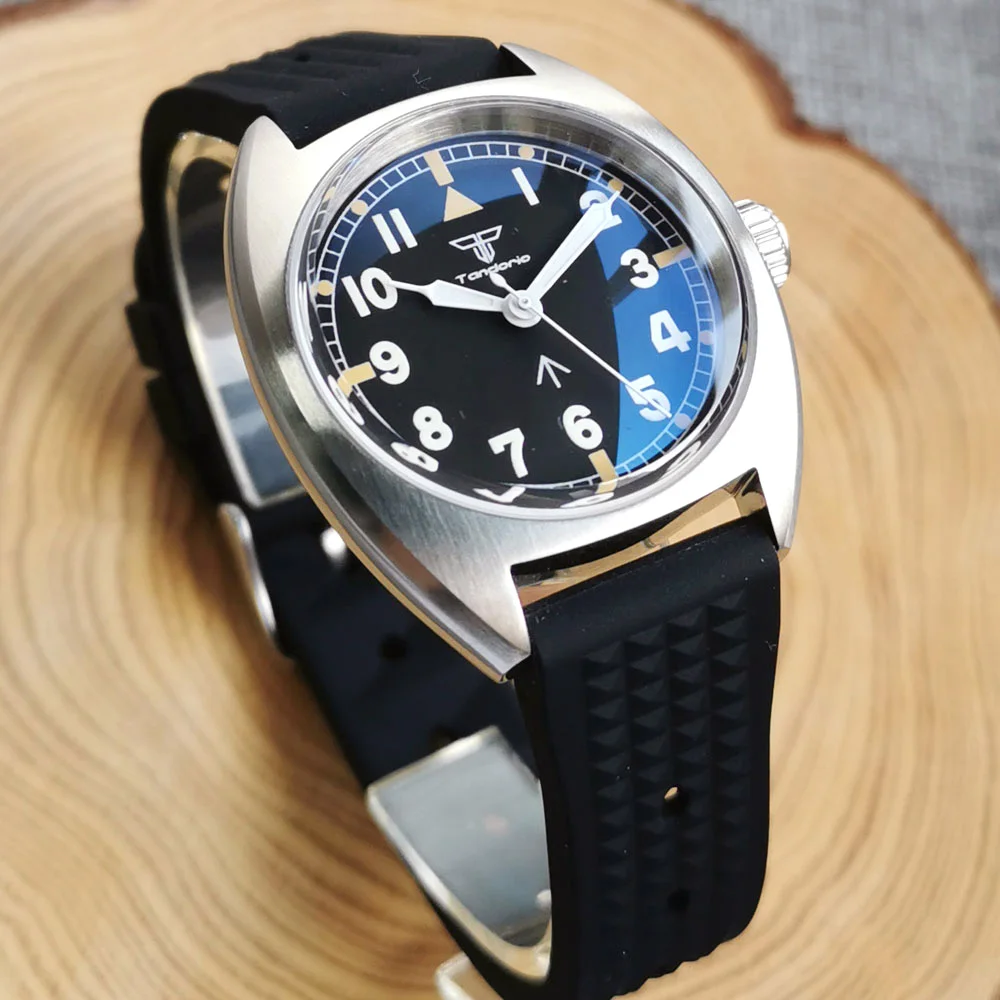
The Historical Development of GMT Tool Watches
The evolution of GMT watches is directly tied to the growth of international air travel and the increasing interconnectedness of the global economy. As commercial aviation expanded in the mid-20th century, pilots needed a reliable way to track multiple time zones simultaneously while maintaining reference to Greenwich Mean Time (later UTC) for navigation and flight planning.
The earliest GMT watches were purpose-built tools for aviation professionals. These watches featured an additional hand that rotated once every 24 hours, pointing to a fixed 24-hour scale. This allowed pilots to track both local time and GMT without confusion between AM and PM hours—crucial for navigation, radio communications, and flight logs.
As international business and tourism grew, GMT watches transitioned from specialized professional equipment to versatile travel companions for civilians. Manufacturers began incorporating more refined aesthetics while maintaining the core functionality that made these watches useful tools.
The introduction of rotating bezels marked a significant advancement in GMT watch design. By enabling the bezel to rotate, manufacturers effectively added the ability to track a third time zone—further increasing the watch’s utility for international travelers and business professionals working across multiple regions.
Throughout their development, GMT watches have maintained a remarkable consistency in their basic approach—using a 24-hour hand and corresponding scale—despite the technological advancements in watchmaking. This enduring design speaks to the inherent practicality of the solution.
The technological advancements seen in the evolution of dive watch technology parallel many of the improvements that have benefited GMT watches, particularly in terms of water resistance, durability, and movement reliability—all features that contribute to making modern GMT watches true “tool watches” in every sense.
Practical Applications: Who Benefits from a GMT Tool Watch?
The versatility of GMT watches makes them valuable tools for various professionals and individuals whose lives span multiple time zones.
International Travelers and Frequent Flyers
For those regularly crossing time zones, a GMT watch offers:
– Instant reference to home time while adjusting to local time
– Reduced jet lag by maintaining awareness of both zones
– Quick time zone adjustments without stopping the watch (with True GMT movements)
– Elimination of AM/PM confusion with the 24-hour format
Business Professionals Working Across Time Zones
Global business operations require coordination across different regions:
– Scheduling international calls and meetings with reference to multiple time zones
– Monitoring international markets and trading hours
– Planning communication with overseas offices or partners
– Maintaining awareness of colleagues’ working hours abroad
Remote Teams Collaborating Globally
With distributed workforces becoming common:
– Team leaders can quickly reference local times for all team members
– Meeting scheduling becomes more intuitive with a glance at the wrist
– Respect for team members’ local work hours becomes easier to maintain
Military and Aviation Personnel
For those in mission-critical roles:
– Coordinating operations across international boundaries
– Maintaining reference to UTC for navigation and communications
– Logging flight times and operations across multiple zones
– Planning mission timelines with awareness of local conditions
Personal Connections Across Distances
Many people maintain important relationships across time zones:
– Knowing when family members or partners abroad are awake or asleep
– Planning calls to connect with loved ones at convenient times
– Maintaining connection to home time while traveling
For those with specific aquatic interests, GMT dive watches offer the additional benefit of timing dives while maintaining awareness of surface time in different locations—a specialized application that showcases the versatility of these timepieces.
How to Use Your GMT Watch: A Practical Guide
Understanding how to properly set and read your GMT watch is essential to maximize its functionality. The process differs slightly depending on whether you have a True GMT or an Office GMT watch.
Setting a True GMT Watch When Traveling
- Pull the crown to the GMT setting position (typically first position)
- Set the GMT hand to point to your home time on the 24-hour scale
- Push the crown back to the winding position
- Pull to the local time setting position (typically second position)
- Set the local hour hand to your current location’s time
- The date will adjust automatically when crossing midnight with the local hour hand
- Return the crown to its starting position
Setting an Office GMT Watch When Traveling
- Pull the crown to the time-setting position (typically second position)
- Set the main hands to your current local time
- Push the crown back to the intermediate position (typically first position)
- Adjust the GMT hand to point to your home time on the 24-hour scale
- Return the crown to its starting position
- Note that changing time zones later will require resetting both the main time and date
Tracking a Third Time Zone Using the Bezel
- Set your watch according to either method above
- Identify the hour difference between your second and third time zones
- Rotate the bezel that many clicks/hours clockwise (if the third zone is behind) or counterclockwise (if ahead)
- Read the third time zone by noting where the GMT hand points on the rotated bezel
Maintaining Correct AM/PM Readings
A common mistake is misreading the 24-hour scale. Remember:
– Numbers 1-12 on the 24-hour scale represent 1:00 AM to 12:00 PM
– Numbers 13-24 (or 1-12 on the night portion of color-coded bezels) represent 1:00 PM to 12:00 AM
– Always use the 24-hour hand with the 24-hour scale, not the regular 12-hour markers
Understanding these procedures is important whether you’re examining the timeline of diving watch innovations or simply trying to make the most of your GMT tool watch’s capabilities.

Tool Watch Essentials: What Makes a GMT Watch a True Tool Watch
A GMT complication alone doesn’t automatically qualify a watch as a “tool watch.” True tool watches combine specialized functionality with robust construction designed for reliability in challenging conditions.
Key characteristics that elevate a GMT watch to tool watch status include:
Durability and Shock Resistance
- Reinforced movement mounting systems
- Shock absorption mechanisms
- Robust case construction that protects the movement
- Scratch-resistant crystal (typically sapphire)
Water Resistance
- Minimum 100m water resistance for versatile daily use
- Screw-down crowns and case backs
- High-quality gaskets and seals
- Regular water resistance testing capabilities
Legibility
- High-contrast dial designs
- Liberal application of luminous material
- Clearly differentiated GMT hand
- Easily readable 24-hour scale
- Anti-reflective coating on the crystal
Bezel Functionality
- Precise click mechanisms
- Resistance to accidental movement
- Durable materials resistant to fading or damage
- Clear numbering and markers
Anti-Magnetic Properties
- Movement protection from everyday magnetic fields
- Antimagnetic alloys in key components
- Soft iron inner cases in some professional models
The essence of a tool watch lies in its prioritization of function over form, though modern designs often successfully marry both. The watch must first and foremost serve its intended purpose reliably, with aesthetic considerations secondary (though still important).
Many of these robust characteristics overlap with features found in military watch engineering for extreme conditions, reflecting the shared heritage of timepieces designed for professional use in demanding environments.
Military Inspired Automatic Watches, Rugged Automatic Watches, Tactical Automatic Watches
Price range: $852.14 through $994.60 Select options This product has multiple variants. The options may be chosen on the product pageClassic Automatic Dress Watches, Day Date Automatic Watches, Perpetual Calendar Automatic Watches
Price range: $540.60 through $574.60 Select options This product has multiple variants. The options may be chosen on the product pageAutomatic Chronograph Watches, Chronograph Pilot Watches
Price range: $233.36 through $237.58 Select options This product has multiple variants. The options may be chosen on the product pageClassic Automatic Dress Watches, GMT Automatic Watches, GMT Pilot Watches
Price range: $1,240.86 through $1,463.33 Select options This product has multiple variants. The options may be chosen on the product pageAutomatic Chronograph Watches, Classic Style Dive Watches
$3,053.06 Select options This product has multiple variants. The options may be chosen on the product pageAutomatic Skeleton Watches, Open Heart Automatic Watches
$98.36 Select options This product has multiple variants. The options may be chosen on the product page
Selecting the Right GMT Tool Watch For Your Needs
Choosing the ideal GMT tool watch requires matching its features to your specific requirements. Consider these key factors to guide your decision:
Movement Type Considerations
The choice between True GMT and Office GMT should be based on your travel habits:
– Frequent travelers benefit significantly from a True GMT movement with its independent hour hand
– Occasional travelers or those tracking remote colleagues may find an Office GMT perfectly adequate
– Consider the smoothness of the setting procedure for your typical usage pattern
Bezel Requirements
Different bezel types serve different needs:
– Fixed bezel models are simpler and often slimmer, with fewer moving parts to maintain
– Bidirectional rotating bezels offer maximum flexibility for tracking third time zones
– Consider the bezel material based on your activities—ceramic for scratch resistance or steel for impact resistance
Robustness Factors
Your lifestyle and activities should determine the durability features you need:
– Water resistance appropriate for your activities (100m for everyday wear, 200m+ for water sports)
– Shock protection based on whether you engage in high-impact activities
– Crystal material (sapphire being the most scratch-resistant option)
Size and Wearability
A tool watch should be comfortable for extended wear:
– Case diameter appropriate for your wrist size
– Lug-to-lug length that doesn’t overhang your wrist
– Thickness that can comfortably slide under a shirt cuff if needed
– Bracelet or strap that secures comfortably during your typical activities
Budget Considerations
GMT watches span a wide price range based on their features:
– Entry-level automatic GMT watches typically feature Office GMT movements
– Mid-range options may offer True GMT functionality with solid build quality
– Luxury options add refinements in finishing, materials, and brand heritage
For aviation enthusiasts, automatic pilot watches often incorporate GMT functionality with additional features specific to flight operations, making them worth considering if aviation is your passion or profession.
Common Misconceptions About GMT Watches
Despite their relatively straightforward functionality, GMT watches are often misunderstood. Let’s clear up some common misconceptions:
Myth: All GMT watches function the same way
Reality: As we’ve explored, there are significant functional differences between True GMT and Office GMT movements. The setting mechanisms, date functions, and ideal use cases differ substantially between these types.
Myth: The GMT hand must always display GMT/UTC time
Reality: While originally designed to track Greenwich Mean Time, the GMT hand can be set to display any time zone you wish. Many travelers set it to home time rather than UTC, and some professionals set it to a key business location’s time.
Myth: GMT watches are only useful for frequent travelers
Reality: While certainly valuable for travelers, GMT watches serve many purposes—from coordinating with international colleagues to maintaining connection with family abroad. Even for those who rarely travel, the ability to track multiple time zones proves surprisingly useful in our connected world.
Myth: The rotating bezel is purely decorative
Reality: On GMT watches with rotating bezels, this feature is highly functional, enabling tracking of a third time zone. The bezel clicks, markings, and directional rotation are all designed with practical time tracking in mind.
Myth: GMT and Dual-Time are interchangeable terms
Reality: While both complications track multiple time zones, they function differently. GMT watches typically use a 24-hour hand with a 24-hour scale, while dual-time watches often display the second time zone via a separate subdial with a standard 12-hour format.
Understanding these distinctions helps appreciate the specific advantages of GMT watches compared to other multi-timezone options. The dive watch heritage and evolution shares many parallels with GMT watches, as both categories developed to serve specific professional needs before finding wider appeal.
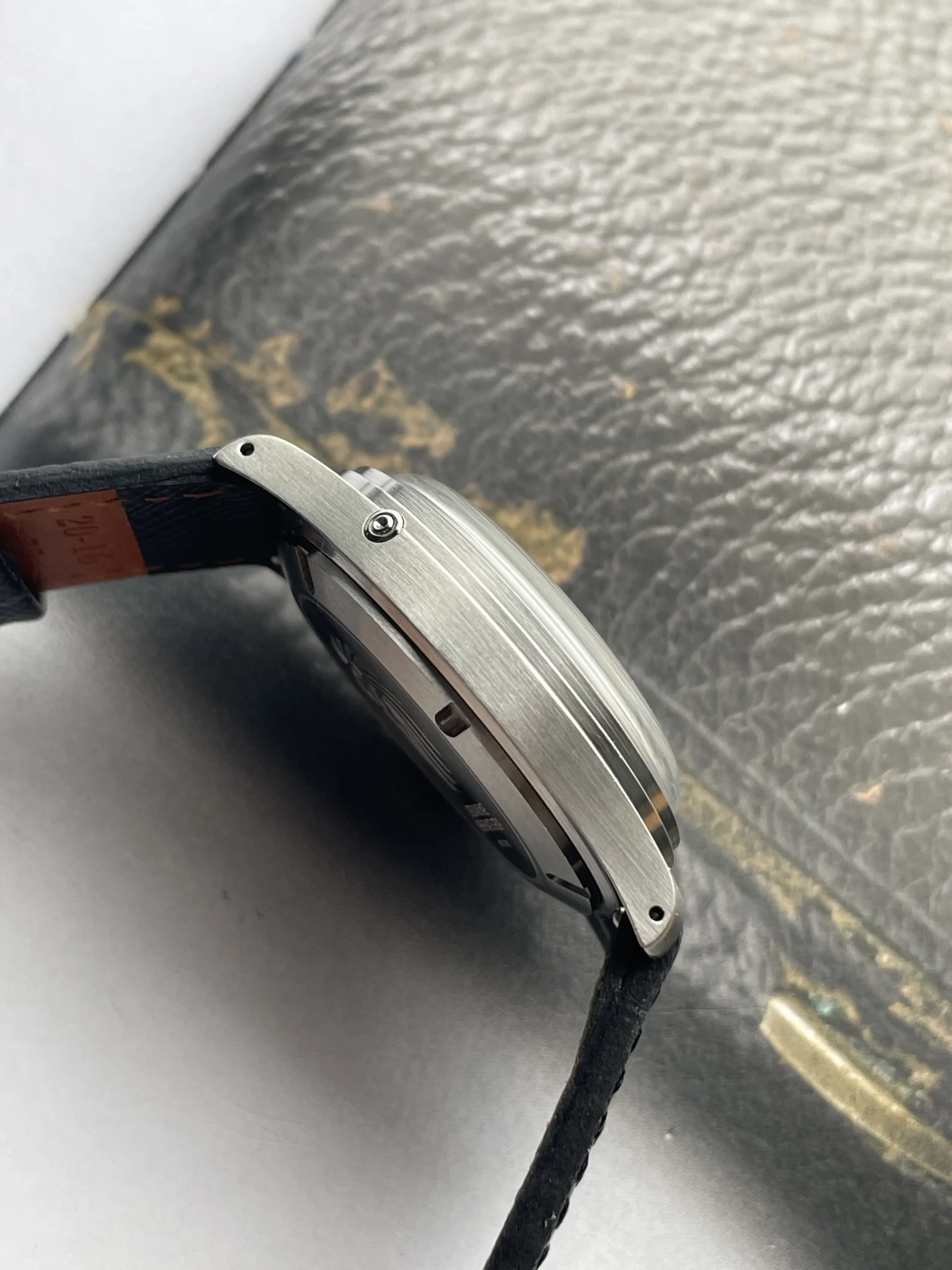
Advanced GMT Features: Beyond the Basics
As watchmakers continue to refine GMT functionality, several advanced features have emerged that enhance their utility and user experience:
Jumping Hour Functionality
Some high-end GMT watches feature a “jumping” local hour hand that can be adjusted in precise one-hour increments:
– Allows for quick timezone changes without stopping the watch
– Maintains perfect timekeeping during travel
– Often synchronizes with the date mechanism for seamless transitions
– Particularly useful for frequent travelers crossing multiple time zones
Enhanced AM/PM Indicators
Beyond the standard 24-hour scale, some GMT watches incorporate additional AM/PM indicators:
– Day/night windows or discs that rotate to show sun/moon symbols
– Color-changing date windows that shift between day and night hours
– Supplementary indicators that help prevent setting errors
Day/Night Bezels with Enhanced Visual Coding
Advanced bezel designs go beyond the traditional two-color schemes:
– Gradient coloring that visually represents dawn and dusk transition periods
– Multiple color segments corresponding to typical activity periods
– Enhanced contrast between day and night portions for better legibility in low light
Extended Power Reserves
Recognizing that travel often disrupts normal watch wearing patterns:
– Power reserves of 70+ hours that ensure the watch remains running throughout weekend trips
– Power reserve indicators specifically calibrated for travel needs
– Quick-winding mechanisms that efficiently restore power
Integrated Complications
Some advanced GMT watches combine their timezone functionality with complementary complications:
– Annual or perpetual calendars that track dates across months and leap years
– Chronograph functions for timing events while traveling
– Moon phase displays synchronized with the GMT timezone
For those interested in mechanical timepieces with various complications, our collection of automatic watches includes models with different combinations of these advanced features, demonstrating how traditional watchmaking continues to evolve with modern needs in mind.
Beyond Travel: Creative Uses for Your GMT Watch
While designed primarily for tracking multiple time zones, GMT watches offer versatility that extends well beyond their intended purpose.
The GMT Hand as an AM/PM Indicator
Even when staying within a single time zone, the GMT hand can serve as a clear AM/PM indicator:
– Set the GMT hand to local time on the 24-hour scale
– The position of the GMT hand instantly clarifies whether it’s day or night
– Particularly useful when waking up disoriented or in windowless environments
24-Hour Timing for Extended Events
The GMT hand’s 24-hour rotation makes it ideal for timing longer events:
– Set the GMT hand to the current time on the 24-hour scale
– Use the rotating bezel to mark the start time
– Track elapsed time up to a full day without resetting
UTC Reference for Technical Activities
For scientific, aviation, or technical applications:
– Keep the GMT hand set to UTC (Universal Coordinated Time)
– Use for synchronizing observations or communications worldwide
– Reference for amateur radio operations, astronomical observations, or global data collection
Analog Countdown Timer
With a rotating bezel, your GMT watch can function as a countdown timer:
– Set the bezel so the GMT hand points to your target completion time
– The advancing GMT hand shows time remaining until it reaches the marked position
– Useful for parking meters, cooking, presentations, or other timed activities
Improvised Navigation Aid
In emergency situations with clear skies, a GMT watch can assist with basic direction finding:
– In the Northern Hemisphere, point the hour hand at the sun
– The halfway point between the hour hand and 12 o’clock indicates approximate south
– The GMT hand set to true local time provides additional reference points
These creative applications demonstrate how the thoughtful design of GMT watches creates versatility beyond their core function. For more information about different watch features and their practical applications, explore our guide to understanding watch features.
Is a GMT Tool Watch Right for You?
Determining whether a GMT tool watch belongs in your collection depends on your lifestyle, preferences, and specific needs. Consider these questions to guide your decision:
Do you regularly need to track multiple time zones?
If you frequently:
– Communicate with people in different time zones
– Travel across time zones
– Monitor international events or markets
– Work with global teams or clients
Then a GMT watch provides genuine functional benefits that you’ll appreciate daily. The convenience of seeing multiple times at a glance becomes truly valuable in these scenarios.
Do you value analog functionality over digital alternatives?
While smartphones and smartwatches can certainly track multiple time zones, they offer a different experience:
– Mechanical GMT watches work without charging or connectivity
– The analog display allows instant visualization of time relationships
– The tactile experience of setting and using mechanical functions
– The heritage and craftsmanship of traditional watchmaking
These factors might outweigh the additional features of digital alternatives, depending on your preferences.
Do you appreciate the versatility of tool watches?
GMT tool watches typically offer:
– Robust construction suitable for active lifestyles
– Water resistance that handles daily activities with confidence
– Legible designs that prioritize functionality
– Versatile styling that works in both casual and formal settings
If these attributes align with your needs, a GMT tool watch might be particularly suitable compared to more specialized or delicate timepieces.
For those who value rugged functionality with traditional design elements, our collection of automatic field and military watches includes models that share the tool watch philosophy with GMT watches, often featuring similar durability characteristics.
The enduring popularity of GMT watches speaks to their practical elegance—solving a real-world problem with a mechanical solution that remains relevant even in our digital age. Whether for professional necessity or personal interest, a quality GMT tool watch offers both practical utility and a connection to the rich heritage of purposeful timepiece design.

